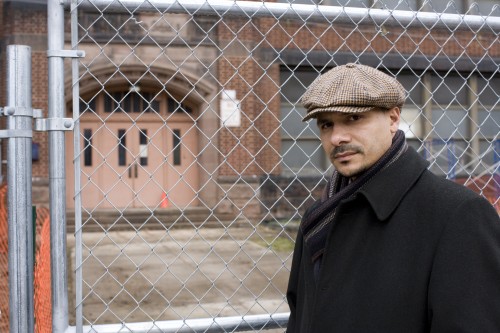The sad truth is that American students perform worse the longer they stay in our public schools…
That the American educational system has fallen behind globally is not debatable. Children are simply not learning to the level that they need to in order to compete in a global market and to maximize their own self worth and value. The problem is recognizable by all, yet the causes and solutions are entrenched in the status quo and endlessly mired in debate and politics. In his new book, Push Has Come to Shove: Getting Our Kids the Education They Deserve–Even If It Means Picking a Fight, Dr. Steve Perry nobly attempts to bring this dysfunctional educational system out of the shadows of the status quo and illuminate all the flaws that prevent children from learning effectively.
As the title suggests, Dr. Perry takes a very confrontational and in your face tone throughout the book. Perry colors his language with war terms like “front line” and also uses colloquialisms freely which gives the text the tone of a passionate speaker rather than an academic treatise. It’s apparent that Perry is trying to reach out and hook a very broad audience of parents and concerned educators rather than aim for the formal educational crowd. In fact, several times in the book Dr. Perry expresses his frustration with academics like Jonathan Kozol and Dianne Ravitch whom he believes had their time to reform and failed.
The meat of the book, and where it succeeds, is Dr. Perry’s attack on the failure of our society to hold teachers, schools, and everyone else involved with the education of our nation’s children accountable. Dr. Perry deftly describes how even the language and attitudes have been shifted to the point we accept ineptitude in our public school systems when we wouldn’t accept it in any other business or area of our life. Perry writes:
No other group in the economy, from professionals to blue-collar workers, stays employed with failure rates as high as America’s educators.
Educators get away with failing to teach our kids to state and local standards by falling back on the same old defense: I tried. As long as we can say – not prove – that we tried, we can hand out diplomas to kids who can’t even read them and keep on shouting that it’s not our fault.
The strongest chapter in the book, and the reason why we accept this incompetence, is the titled “Gatekeepers” and describes the power of the teachers’ union. Simply, any attempt at educational reform is countered by the union which carries immense political weight. Reforms from school choice, certification, and the school calendar are thought by many to be beneficial to the education of students but may obviously negatively impact the entrenched position that teachers have dug in for themselves. So the fight for the status quo remains the top priority for the unions, not improving the education of children. Dr. Perry illustrates this point by documenting how difficult it is to remove even clearly incompetent teachers that cannot stay awake during class. If nothing else, the price of the book is justified by that chapter alone.
Though Dr. Perry’s screed on the problems of our educational system is both powerful and effective, his solutions are less so. Dr. Perry is first a Principal and administrator and, it appears, a very effective one. He lays out an effective outline in Part Three about how to find great teachers, enact engaging lesson plans, and he aptly describes the role of the Principal and parents. In Part Seven he lists several proposals to better the overall system, such as lengthening the calendar and modernizing the curriculum. However, the biggest criticism that can be levied against the book is that while Dr. Perry gives a great game plan on how to run an accomplished school, he fails to show how it can be scalable throughout the nation. The fact is that the reason there are so many incompetent teachers is not only because the union protects them, but also because good teachers are in shortage. Dealing with the problems that Dr. Perry illuminates require a lot of data, detail, research, and pragmatism and unfortunately Push Has Come to Shove come up short on the nitty gritty aspects of solving the problems. The solutions are presented but not much effort is put forward to justifying them with any data, everything is anecdotal or assumed to be true.
Despite the lack of research and data presented, which Dr. Perry seems to disavow anyway as someone on the front lines, the book is very effective at bringing attention to the failing of the public educational system and the sense of urgency that we must acknowledge it. Dr. Perry’s book should be a must read for any parent, if for no other reason than to change the expectations that a parent should hold. As a taxpaying citizen, one should demand that public schools fulfill their obligations and refute the language that anyone other than the educational institution is at fault for the failure to educate children. The status quo is not working and for reformation or transformation to occur on a nationwide basis people have to be aware of the problems. Push Has Come to Shove effectively introduces the reader to the quagmire of today’s educational battles and is an excellent first step in striving for change.
